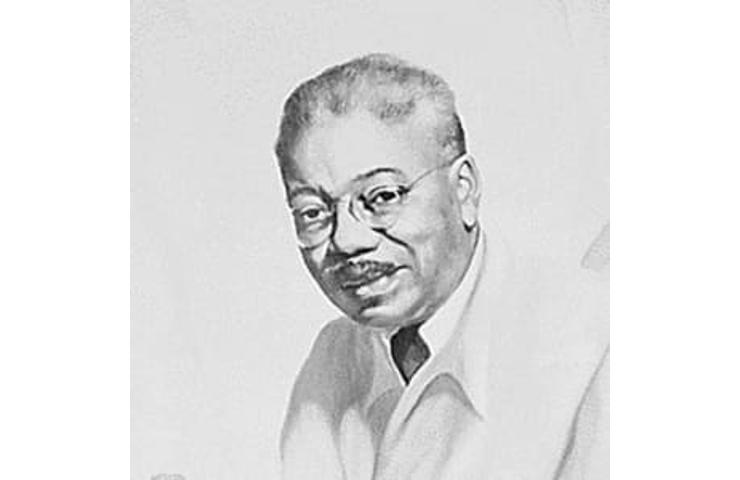No products in the cart.

Painter, Illustrator (1899–1979)
Aaron Douglas was an African-American painter and graphic artist who played a leading role in the Harlem Renaissance of the 1920s.
Synopsis
Aaron Douglas was an African-American painter and graphic artist who played a leading role in the Harlem Renaissance of the 1920s and 1930s. His first major commission, to illustrate Alain LeRoy Locke’s book, The New Negro, prompted requests for graphics from other Harlem Renaissance writers. By 1939, Douglas started teaching at Fisk University, where he remained for the next 27 years.
Early Life
Born in Topeka, Kansas, Aaron Douglas was a leading figure in the artistic and literary movement known as the Harlem Renaissance. He is sometimes referred to as “the father of black American art.” Douglas developed an interest in art early on, finding some of his inspiration from his mother’s love for painting watercolors.
After graduating from Topeka High School in 1917, Douglas attended the University of Nebraska, Lincoln. There, he pursued his passion for creating art, earning a Bachelor of Fine Arts degree in 1922. Around that time, he shared his interest with the students of Lincoln High School in Kansas City, Missouri. He taught there for two years, before deciding to move to New York City. At the time, New York’s Harlem neighborhood had a thriving arts scene.
Harlem Renaissance
Arriving in 1925, Douglas quickly became immersed Harlem’s cultural life. He contributed illustrations to Opportunity, the National Urban League’s magazine, and to The Crisis, put out by the National Association for the Advancement Colored People. Douglas created powerful images of African-American life and struggles, and won awards for the work he created for these publications, ultimately receiving a commission to illustrate an anthology of philosopher Alain LeRoy Locke’s work, entitled The New Negro.
Douglas had a unique artistic style that fused his interests in modernism and African art. A student of German-born painter Winold Reiss, he incorporated parts of Art Deco along with elements of Egyptian wall paintings in his work. Many of his figures appeared as bold silhouettes.
In 1926, Douglas married teacher Alta Sawyer, and the couple’s Harlem home became a social Mecca for the likes of Langston Hughes and W. E. B. Du Bois, among other powerful African Americans of the early 1900s. Around the same time, Douglas worked on a magazine with novelist Wallace Thurman to feature African-American art and literature. Entitled Fire!!, the magazine only published one issue.
With his reputation for creating compelling graphics, Douglas became an in-demand illustrator for many writers. Some of his most famous illustration projects include his images for James Weldon Johnson’s poetic work, God’s Trombone (1927), and Paul Morand’s Black Magic (1929). In addition to his illustration work, Douglas explored educational opportunities; after receiving a fellowship from the Barnes Foundation in Pennsylvania, he took time to study African and modern art.
Douglas created some of his best-known painting in the 1930s. In 1930, he was hired to create a mural for the library at Fisk University. The following year, he spent time in Paris, where he studied with Charles Despiau and Othon Friesz. Back in New York, in 1933, Douglas had his first solo art show. Soon after, he started one of his most legendary works—a series of murals entitled “Aspects of Negro Life” that featured four panels, each depicting a different part of the African-American experience. Each mural included a captivating mix of Douglas’s influences, from jazz music to abstract and geometric art.
Later Career
In the late 1930s, Douglas returned to Fisk University, this time as an assistant professor, and founded the school’s art department. Taking his educational responsibilities quite seriously, he enrolled at Columbia University’s Teachers College in 1941, and spent three years earning a master’s degree in art education. He also established the Carl Van Vechten Gallery at Fisk and helped secure important works for its collection, including pieces by Winold Reiss and Alfred Steiglitz.
Douglas remained committed to learning and growing as an artist, outside of his work in the classroom. He received a fellowship from the Julius Rosenwald Foundation in 1938, which funded his painting trip to Haiti and several other Caribbean islands. He later won other grants to support his artistic endeavors. Continuing to produce new works, Douglas had a number of solo exhibits over the years.
Death and Legacy
In his later years, Douglas received countless honors. In 1963, he was invited by President John F. Kennedy to attend a celebration of the centennial of the Emancipation Proclamation, held at the White House. He also earned an honorary doctorate from Fisk University in 1973, seven years after his retirement from the school. He remained an active painter and lecturer until the end of his life.
Douglas died at the age of 79 on February 2, 1979, in a Nashville hospital. According to some reports, he died of a pulmonary embolism.
A special memorial service was held for Douglas at Fisk University, where he had taught for nearly 30 years. At the service, Walter J. Leonard, the university’s president at the time, remembered Douglas with the following statement: “Aaron Douglas was one of the most accomplished of the interpreters of our institutions and cultural values. He captured the strength and quickness of the young; he translated the memories of the old; and he projected the determination of the inspired and courageous.”


